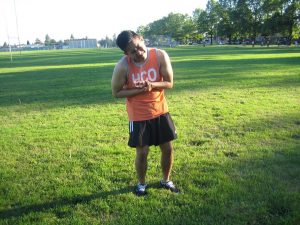Carpal boss involves overgrowth of bone at the site where the index or middle finger meets the carpal bones. The carpal bones are comprised of 8 small bones to form the wrist.
The overgrowth results to a rigid lump on the rear part of the wrist that does not move. In most cases, there are no symptoms. Treatment is only necessary if it starts to become painful or disrupts with the range of motion in the wrist.
What are the indications?
The characteristic sign of carpal boss is a rigid bump on the rear part of the wrist. It might be present in either one or both wrists.
In most cases, there are no symptoms. Nevertheless, the bumps can become tender to the touch or sore if the wrist is moved. Some might experience painful snapping of the adjacent tendons if they move over the bony protrusion.
What are the causes?

The precise cause of carpal boss could not be determined. In some individuals, it is linked to a traumatic injury or repeated wrist movements especially in golf or racket sports.
Additionally, it also affects the dominant hand which indicates that repeated motions and overuse might play a role. In some cases, it might be a congenital condition brought about by bone spur.
Management of carpal boss
It is important to note that carpal boss does not necessitate treatment if it does not trigger any issues. Nevertheless, if there is pain or soreness or the bump disrupts with daily activities, there are treatment options available.
Conservative treatment
If treatment is necessary, the doctor will start with these measures:
- A splint or bandage is utilized to immobilize the wrist
- Over-the-counter pain medications
- Application of ice on the affected site
- Corticosteroid shot into the lump
If there are no signs of improvement with the symptoms within 2 months, the doctor will suggest surgery.
Surgical intervention
The doctor might decide to surgically remove the bump. A local, regional or general anesthesia is given before the doctor creates an incision in the back part of the hand.
After surgery, the individual can start to use the hand within a week and resume normal activities within 2-6 weeks.
